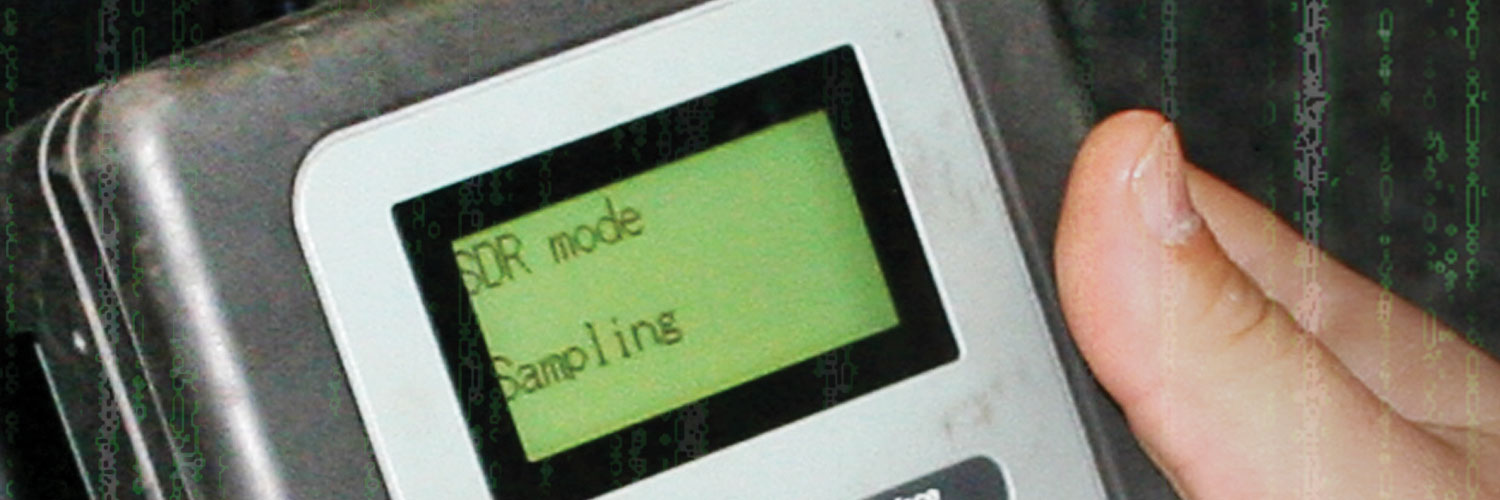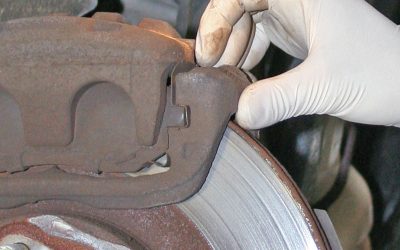Few types of diagnostic trouble codes can be more confusing than those dealing with emission problems. From the beginning of mandatory OBD II in 1996, more codes have been added and some have changed. Here’s a look at how Subaru of America, Inc. has added and streamlined P0400-series DTCs.
Emissions-related OBD II diagnostic trouble codes (DTCs) have evolved over the last dozen years to more precisely pinpoint the problems in automotive systems. The handful of emissions codes used for On-Board Diagnostic (OBD) systems on the late 1980s and early 1990s has grown to nearly a hundred today. Over that time, many DTCS have been modified to more accurately reflect the cause, while others have been added to the list to address issues with advancing technology.
In order to understand how these factors affect Subaru vehicles, it’s necessary to first look at the history of emissions control, on-board diagnostics and the DTC coding system.
How We Got Here
The history of automotive emissions monitoring and control began over forty years ago. The skies over major urban areas were becoming polluted with an unhealthy combination of industrial and automotive exhaust gases, which formed a smoky fog, dubbed “smog.†The State of California took steps to reduce these pollutants by forming commissions and administrations to regulate the sources of these pollutants. In 1966, California required basic emission control devices on all passenger cars and light trucks sold within the state. The Federal government followed a couple of years later, but enforcement was difficult to maintain.
The U. S. Congress passed the Clean Air Act in 1970 and created the Environmental Protection Agency to regulate and police the problem of air pollution (among other things), but the huge bureaucracy needed to research, form standards, regulate and inspect was still not in place.
In the early 1980s, a few on-board computer modules began to appear on passenger vehicles as a way to control fuel injection and emission controls. These systems were implemented mainly for inspection and testing at the end of assembly lines to make sure vehicles left the factory in compliance with California and EPA regulations.
The California Air Resources Board (CARB) mandated that all new vehicles sold in the state in 1988 be equipped with basic on-board diagnostic (OBD) emissions controls. Automakers complied, but each used its own proprietary designs of control modules, data link connectors, sensors, software and actuation devices. Vehicles could only be serviced with that company’s tools and service information, causing much confusion and restricting service by the independent aftermarket.
To begin the road toward uniformity, the Society of Automotive Engineers (SAE) called for standardization, beginning with the data link connector (DLC) and diagnostic test signals. For the next few years, progress was slowly but steadily made toward standardizing the emissions-related portions of OBD, while leaving the rest of the diagnostics to proprietary discretion of the manufacturer.
In 1994, CARB issued a complete set of required diagnostic parameters for vehicles sold in California for the 1996 model year. These new “OBD II†standards, including the standardized DLC and Diagnostic Trouble Codes (DTCs), were adopted by the U.S. government for vehicles sold in all states for 1996.
Automobile manufacturers were allowed to establish or keep their own proprietary codes, but were mandated to also align those dealing with emissions as OBD II DTCs.
It is at that point that we begin our look at how Subaru vehicles use OBD II codes and how the systems have developed up to 2008.
NOTE: This article will deal only with OBD II diagnostics which were mandated in all vehicles starting with 1996 models. For On-Board Diagnostics (OBD) trouble codes and diagnostic procedures on most 1995 and prior Subaru vehicles, refer to the Subaru Technical Information Systems website at http://techinfo.subaru.com and search under the appropriate vehicle and model year.
Decoding the Codes
One of the main reasons that emissions codes have been confusing is because, as emission systems evolved over the last dozen years, more codes have been added to cover newer and more complex devices.
OBD II diagnostic trouble codes (DTCs) are identified by a standardized system. Each letter or digit in the 5-place system represents a factor that tells a portion of the total story.
Let’s look at an example.
The DTC P0442 can be decoded using the following system:
•The first place “P†in the P0442 code tells in which subsystem the fault is occurring:
P = Powertrain
B = Body
C = Chassis
U = Network Communication
Now, we know that the problem is in the powertrain.
•The second place “0†in the P0442 code tells whether the DTC is a generic OBD II fault as standardized by the Society of Automotive Engineers (SAE) or one developed my the vehicle manufacturer:
0 = SAE
1 = Manufacturer
OK, it’s a standard OBD II DTC.
•The third place “4†in the P0442 code indicates the affected subsystem:
1 = Air/Fuel Control
2 = Fuel System (Injectors)
3 = Ignition System/Misfire
4 = Auxiliary Emission Controls (EGR/AIR/CAT/EVAP)
5 = Vehicle Speed/Idle Control and Auxiliary Inputs
6 = Computer System (PCM or Communications)
7 = Transaxle/Transmission
8 = Transaxle/Transmission
The problem lies in the emission control systems, but further information will be required to pinpoint the problem.
•The fourth and fifth places “42†in the P0442 code will give the specific location of the faulty circuit or component. These digits vary by subsystem, but referring to DTC charts or reading with a quality scan tool will identify the exact problem. In this case, the “42†indicates: Evaporative Emission Control System Malfunction (Small Leak – 1 mm/0.04 in).
In many 2001 and prior models, a P0442 DTC may be caused by a loose gas cap. In 2002, the DTC P0457 was added to differentiate between an EVAP system leak and a loose gas cap.
Subaru OBD II Diagnostic Trouble Codes.
Here is a chronological list of OBD II DTCS used in Subaru vehicles:
1995 Impreza, Legacy, Outback, Outback Sport
P0400
Exhaust Gas Recirculation Flow Malfunction
P0403
Exhaust Gas Recirculation Malfunction
P0420
Catalyst System Efficiency Below Threshold
P0441
Evaporative Emission Control System Incorrect Purge Flow
P0443
Evaporative Emission Control System Incorrect Purge Control Valve Circuit Malfunction
1996 (Full OBD II)
P0410
Secondary Air Injection System Malfunction
P0412
Secondary Air Injection System Switching Valve “A†Circuit Malfunction
P0440
Evaporative Emission Control System Malfunction
P0446
Evaporative Emission Control System Vent Control Malfunction
P0450
Evaporative Emission Control System Pressure Sensor Malfunction
P0451
Evaporative Emission Control System Pressure Sensor Range/Performance Problem
P0461
Fuel Level Sensor Circuit Range/Performance Problem
1997
P0452
Evaporative Emission Control System Pressure Sensor Low Input
P0453
Evaporative Emission Control System Pressure Sensor High Input
P0462
Fuel Level Sensor Circuit Low Input
P0463
Fuel Level Sensor Circuit High Input
1998
P0480
Cooling Fan Relay 1 Circuit Low Input
P0483
Cooling Fan Function Problem
2001
The 2001 model year saw the addition of more DTCs and clarification of some existing DTCs to further focus on the problems of leaks and incomplete purging.
P0442
Evaporative Emission Control System Malfunction (Small Leak – 1 mm/0.04 in.)
P0444
Evaporative Emission Control System Purge Control Valve Circuit Low Input
P0445
Evaporative Emission Control System Purge Control Valve Circuit High Input
P0447
Evaporative Emission Control System Vent Control Low Input
P0448
Evaporative Emission Control System Vent Control High Input
P0456
Evaporative Emission Control System Malfunction (Very Small Leak
– .05 mm/.02 in.)
P0464
Fuel Level Sensor Intermittent Input
2002
P0457
Evaporative Emission Control System Malfunction (Fuel Cap Loose/Off)
P0458
Evaporative Emission Control System Purge Control Valve Circuit Low Input
P0459
Evaporative Emission Control System Purge Control Valve Circuit High Input
2005
P0400
Exhaust Gas Recirculation Flow
P0420
Catalyst System Efficiency Below Threshold (Bank 1)
P0442
Evaporative Emission Control System Leak Detected (Small Leak)
P0447
Evaporative Emission Control System Vent Control Circuit Open
P0448
Evaporative Emission Control System Vent Control Circuit Shorted
P0451
Evaporative Emission Control System Pressure Sensor Range/Performance
P0452
Evaporative Emission Control System Pressure Sensor Low Input
P0453
Evaporative Emission Control System Pressure Sensor High Input
P0456
Evaporative Emission Control System Leak Detected (Very Small Leak)
P0457
Evaporative Emission Control System Leak Detected (Fuel Cap Loose/Off)
P0458
Evaporative Emission Control System Purge Control Valve Circuit Low
P0459
Evaporative Emission Control System Purge Control Valve Circuit High
P0461
Fuel Level Sensor Circuit Range/Performance
P0462
Fuel Level Sensor Circuit Low Input
P0463
Fuel Level Sensor Circuit High Input
P0464
Fuel Level Sensor Circuit Intermittent
P0483
Cooling Fan Rationality Check
2006
P0410
Secondary Air Injection System
P0411
Secondary Air Injection System Incorrect Flow Detected
P0413
Secondary Air Injection System Switching Valve “A†Circuit Open
P0414
Secondary Air Injection System Switching Valve “A†Circuit Shorted
P0416
Secondary Air Injection System Switching Valve “B†Circuit Open
P0417
Secondary Air Injection System Switching Valve “B†Circuit Shorted
P0418
Secondary Air Injection System Control “A†Circuit Open
You can learn more about Subaru emissions-related
diagnostic trouble codes and how to service them by logging onto the Subaru Technical Information Systems website at http://techinfo.subaru.com and purchasing or downloading the following Technicians Reference Booklets:
On Board Diagnostics – II (OBD II) Technicians Reference Booklet, Module 407; P/N MSA5P0162C
Evaporative Systems Diagnosis Technicians Reference Booklet; P/N MSA5P0922C.
Always refer to the Subaru Technical Information Systems website at http://techinfo.subaru.com for the correct information for the Subaru vehicle you are servicing .
Download PDF




0 Comments